Non-Linear Stories
They might not be particularly common, but stories that are presented out of chronological order can be fascinating exercises in audience manipulation. If you pull it off, a non-linear story can really keep your audience engaged, working out the mystery that unfolds, searching for the clues that they find as we are presented with each fragment of time, leading to that great pay-off.
However, there is the risk that you confuse the viewer and lose their interest. A central mystery, about why the story is told out of sequence, isn’t enough. You have to justify telling a story in this way through the arc of your Character, or Characters.
Will we learn of shocking or vital personal revelations by watching the story’s end at the beginning of the movie? Do we learn to empathize with a Character, or Characters, by first learning about their future? Some great examples that show how this can be done well are Memento, Pulp Fiction, Back To The Future, Looper and Timecrimes.
Memento
 Memento is the first great example of a non-linear narrative that come to mind. Christopher Nolan’s breakout hit, based on a short story written by his brother, tells the story of amnesiac detective Leonard Shelby (Guy Pearce) as he tries to find his wife’s killer. He has to tattoo clues onto his body, and takes polaroids, because he keeps forgetting what he had previously discovered.
Memento is the first great example of a non-linear narrative that come to mind. Christopher Nolan’s breakout hit, based on a short story written by his brother, tells the story of amnesiac detective Leonard Shelby (Guy Pearce) as he tries to find his wife’s killer. He has to tattoo clues onto his body, and takes polaroids, because he keeps forgetting what he had previously discovered.
The film takes place out of order, representing Leonard’s patchy memory. As the film progresses, we learn of vital clues that will help the audience solve the mystery. We also find out that Leonard is being manipulated. The film’s structure is vital to how the plot unfolds, and how Leonard changes as a person.
Christopher Nolan loves telling his stories in a non-linear fashion- Dunkirk, Inception, Batman Begins and The Prestige all employ this technique. It always works because Nolan, despite his love of spectacle, puts Character first.
Pulp Fiction
 Quentin Tarantino’s most famous film features a wide variety of characters, all with different arcs, intersecting with one another as the complex script jumps backwards and forwards in time.
Quentin Tarantino’s most famous film features a wide variety of characters, all with different arcs, intersecting with one another as the complex script jumps backwards and forwards in time.
One of the most famous moments, presented out of chronological order, is a flashback to Christopher Walken’s soldier telling a young Bruce Willis about the history of his late father’s wristwatch during their time together on the battlefield. It tells us about Bruce Willis’ character, and this also pays off later in the film.
Tarantino is a huge fan of structuring his films in a non-linear fashion, most notably in The Hateful Eight. As the writer of his films, as well as Director, he always justifies the use of this style of filmmaking because it is always done in service of his Characters.
Justify Your Method
 Back to the Future, Rian Johnson’s 2012 film Looper, and Nacho Vigalondo’s 2007 Spanish film Timecrimes (Los Cronoscrimines) are both high-concept Science-Fiction films that are centered around Time Travel technology. They can justify the use of a non-linear narrative even more than the aforementioned examples.
Back to the Future, Rian Johnson’s 2012 film Looper, and Nacho Vigalondo’s 2007 Spanish film Timecrimes (Los Cronoscrimines) are both high-concept Science-Fiction films that are centered around Time Travel technology. They can justify the use of a non-linear narrative even more than the aforementioned examples.
The fact their films have a non-linear narrative is central to the film, as opposed to a gimmick. Their Characters experience events in a non-linear fashion and it shapes their evolution throughout the films. These films have both Story and Character reasons for being non-linear.
Structure of A Character’s Journey
You better have a good reason to tell your story out of order. If you just do it as a gimmick, your story is confusing and unsatisfactory for the audience. But, even worse, you’ve betrayed your Character. Even if your film’s structure is out of order, before you put pen to paper, or finger to keyboard, you need to map out your Character’s journey from start to finish.
 One method is to plan out your story, and therefore the Character’s arc, in chronological order. That way, you know where you character starts and where they end up. Then, as you rewrite, you can begin to move all the plot points into an order you feel will benefit your story and your Characters.
One method is to plan out your story, and therefore the Character’s arc, in chronological order. That way, you know where you character starts and where they end up. Then, as you rewrite, you can begin to move all the plot points into an order you feel will benefit your story and your Characters.
If you know your non-linear structure well enough, you can plan out your character’s arc this way. That way, audience and Character experience the same arc at the same time, and only you know how it truly ends. Think about why you’ve placed this flash-back, or that flash-forward, on page 24 for example. Are you hitting a story beat? Do we need to know this revelation about the Character at this exact point for maximum impact?
The Character Map
 When you use a Character Map, it doesn’t matter what order your story is in. The film examples above show you how different writers and directors approached this kind of narrative, and that they had a good reason to do it.
When you use a Character Map, it doesn’t matter what order your story is in. The film examples above show you how different writers and directors approached this kind of narrative, and that they had a good reason to do it.
You can write your non-linear story any way you want, but it’s going to be a lot easier, and your Characters will be much better, if you use a Character Map first. It will help you work out what your Character is like at the start of the story, and who they are by the end of it. You’ll know how they present themselves to others, what they’re afraid of, what traits they rely on, what traits get them into trouble and what they have to do in order to change.
The order in which you tell that Character’s journey is up to you. But have your Character mapped out first so you don’t have a nonsensical mess with no emotional anchors. My Character map eBook can help you. It’s available at my online store.
]]>Crisis of Faith
 There are plenty of movies like Silence, The Last Temptation of Christ and Noah that tackle characters experiencing a Crisis of Faith. They work because they address something most of us will face in our lifetime, whether or not you are religious. We all face cliff-edges in our life, and can either stay where we are, or take a Leap of Faith.
There are plenty of movies like Silence, The Last Temptation of Christ and Noah that tackle characters experiencing a Crisis of Faith. They work because they address something most of us will face in our lifetime, whether or not you are religious. We all face cliff-edges in our life, and can either stay where we are, or take a Leap of Faith.
Characters like Noah (Russell Crowe), Jesus (Willem Dafoe) and Father Rodrigues (Andrew Garfield) find that an event comes along with makes them question everything they thought they knew- in this case, their relationship with their God.
However, these examples are either fictional, biblical or historical. In the last few years, a brilliant TV series has shown a man of God in the modern world. This man faces constant Crisis of Faith, but when he overcomes his doubts, he is a better person for doing so.
Rev.
This BBC sitcom starring Tom Hollander depicts the Reverend Adam Smallbone (Hollander), married to an ambitious and talented solicitor, Alex (Olivia Colman). Despite reluctance from Alex, they leave their cushy country parish in a well-to-do area to go and run a parish in one of London’s poorest areas.
His best friend is an alcoholic homeless parishioner he shares beer and cigarette breaks with. His family is harassed by a clueless drug addict who is always trying to scam them.
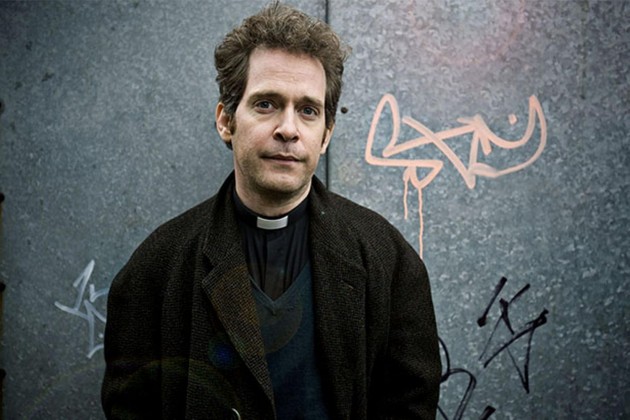
Adam faces constant threats of his church closing down, a faith school that has little to do with its parish, and the bureaucracy of the Church of England. Adam, not only experiences challenges on a daily basis that make him feel as though his church is irrelevant. The strain it puts on his marriage and the kinds of tragedies he witnesses within inner-city London make him also question whether he truly believes in God.
We always hear him talking to God throughout the show’s quieter moments, but he’s always wondering if God is listening to him.
Empathy
Rev. works so well because our lead character, who preaches the word of God, is just as flawed as the rest of us are, regardless of our faith. Everyone who believes in some sort of God places their love and trust in this faith. It is only natural they would doubt themselves, and feel all sorts of emotions if something terrible happens. If their faith is not rewarded when they feel they need intervention, they can feel abandoned.
Despite preaching the word of God, Adam struggles on a daily basis as he attempts to hold together his marriage, his community, and his church. At one point, he seriously considers abandoning his faith forever. If you want to know whether or not he takes the Leap of Faith required to keep everything he holds dear, you’ll have to watch the show!
Leap of Faith

I often talk about Characters having to take a Leap of Faith detailed more thoroughly in my Character Map eBook and available in my online store. It takes courage to overcome the leap in the face of our fears. Characters will go on a journey throughout a novel, or a film, or a TV series, to discover what they want vs. what they really need. And if they have the courage to live an authentic life. By the end of their journey, they face a choice– to live in fear or to live in faith.
]]>
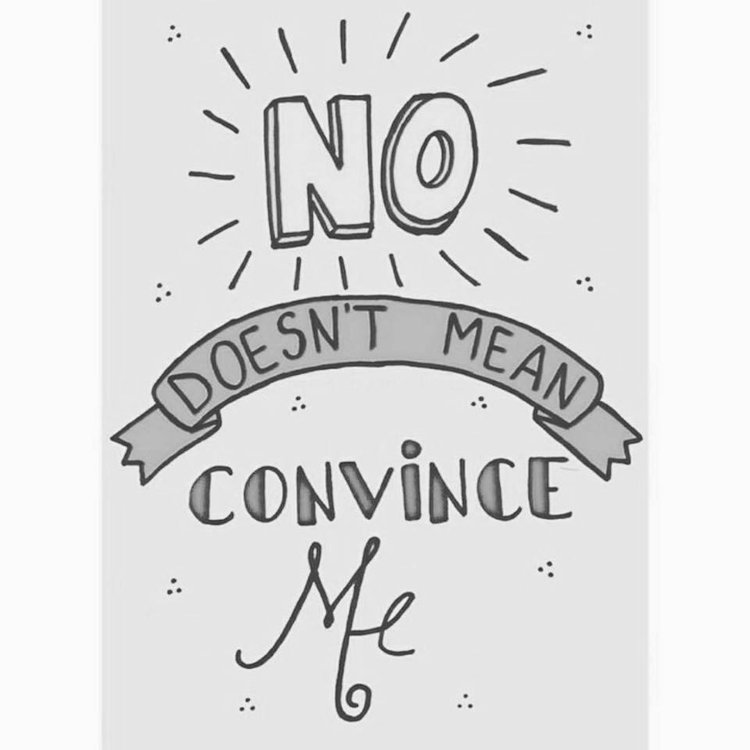 Let’s say a powerful older male judge on an important talent show demanded to kiss a shy young woman on national television BEFORE judging her performance. She refused and he insisted, pulling the young woman close and kissing her without her consent.
Let’s say a powerful older male judge on an important talent show demanded to kiss a shy young woman on national television BEFORE judging her performance. She refused and he insisted, pulling the young woman close and kissing her without her consent.
Wouldn’t the #MeToo and #TimesUP internet be enraged, asking that he be booted off the show or severely punished? There was some viewer push back on Twitter but not nearly enough.
Inappropriate pressure was applied to 19-year-old American Idol contestant Benjamin Glaze. He told the judging panel he had never kissed a girl. Katy Perry motioned for him to give her a peck on the cheek — only to turn her face at the last second and kiss him full on the lips. Then she demanded a “smacking” sound from him.
Glaze staggered in surprise. The other judges, Luke Bryan and Lionel Richie howled with laughter and gave Perry high-fives. Glaze was rattled before his performance. He said he was uncomfortable because he wanted to save his first kiss for his first relationship.
American Idol and Katy Perry insisted it was all in good fun. But that’s what inappropriate men have been saying to women for years. #MeToo applies to men. I don’t care how Glaze or the show has backpedaled, saying it all turned out okay. Pressure much? I don’t care how important or attractive the celebrity is- no thanks means no.
]]>

Thinkpiece Thursday
I Am Not A Witch
In a remote Zambian village, Shula, a nine-year-old girl, is orphaned and alone. Shula is unwanted by everyone and considered a nuisance- so they accuse her of being a witch. Shula is an innocent easy target.
The villagers gather outside the local police office and demand action. The skeptical policewoman sees a small child. But a corrupt government official, Mr. Banda, who declares himself Shula’s “state guardian,” sees a pay cheque.
Mr. Banda is a sweaty fat verbose conniver, a combination of lethal and ludicrous. He carts his prize to the local “witch camp”. Shula can either join the other “witches” as free field labor or be killed as a goat. Shula and the other women are tethered to their chores by wide cotton ribbons. One end is attached to their backs and the other end wound around enormous wooden spools housed on a large flatbed truck. They are held captive by a light floating “chain” that wafts in the breeze.
The ribbons are a brilliant metaphor. They look like something from a fairy story and seem surreal and silly until you consider how sinister they are. They are the way that men like Banda control the women and he reminds the elder “witches” to be grateful for how much extra ribbon he has given them since taking office. It’s a familiar argument by men who want to restrict women and want women to be grateful for their constraints. It could always be worse, right?
In my experience…
I recently visited Cape Town. The city counts down the days until taps run dry and are closed off. I’ve seen firsthand how life changes in a severe drought. Shula is exhorted to dance to alleviate the local lack of rain and water starvation. In the purity of her innocent heart, Shula dances herself to death and the rains come. This frees Shula from her enslavement and inspires all the “withes” to cut their ribbons and disappear from the camp.
This is a dreamy surreal movie with dark undertones of exploitation and slavery.

drought in cape town
]]>Lessons to Learn from Wakaliwood
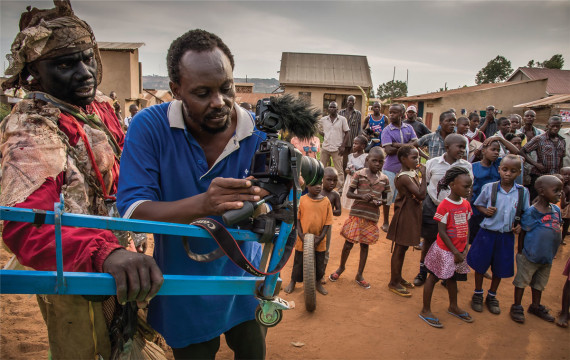 2009. Isaac Nabwana Godfrey Geoffrey (or Nabwana I.G.G.) was just a fan of Hollywood action movies. He was living in the slum of Wakaliga, near Uganda’s capital city Kampala. He decided to make his own- Uganda’s first action movie! He sold everything he owned and made bricks so he could raise enough money to buy an old Sony camcorder.
2009. Isaac Nabwana Godfrey Geoffrey (or Nabwana I.G.G.) was just a fan of Hollywood action movies. He was living in the slum of Wakaliga, near Uganda’s capital city Kampala. He decided to make his own- Uganda’s first action movie! He sold everything he owned and made bricks so he could raise enough money to buy an old Sony camcorder.
Don’t Scale Back Your Ambition
Isaac rallied the people of Wakaliga together, with less than a $200 budget, to make Who Killed Captain Alex? an action movie that makes no sense whatsoever but is absolutely hilarious with surprisingly good action. One of the reasons is that he and his friends taught themselves Kung Fu and now compete in local championships, so the action is authentic. He built himself an editing suite to include CGI in his films, and after making every movie, he has to delete the footage so he has enough space to make his next film.
After the film became a success, he developed “Wakaliwood”, a film studio within Wakaliga that has created such hits as Bad Black, Cannibal Mama, and Ebola Hunter. They play film festivals worldwide, and enough fans bankroll Wakaliwood that it is self-sustaining. Isaac dreamed big, made a movie whose ambition doesn’t necessarily match its budget, and it paid off. His long-term project is building an entire life-size replica helicopter for his next film! and he’s almost there!
 Don’t Forget Where You Came From
Don’t Forget Where You Came From
Isaac had survived the Ugandan Civil War and lived under the brutal dictatorship of Idi Amin. Yet he fed his experiences into his movie, which makes for one of the funniest moments in the movie. His production company, RaMon Film Productions, is named after his grandmothers Rachel and Monica, who raised him. He even composed a song dedicated to them which plays over the credits of Who Killed Captain Alex?
Throughout it all, Isaac has remained committed to improving his community through the growth of Wakaliwood. People in Wakaliga who sell his DVD’s are allowed to keep a large percentage of any sales. He cares about his friends and his family, whilst doing what he loves without sacrificing his integrity. Not always true in Hollywood.
Expect the Unexpectable
Isaac made Who Killed Captain Alex? for fun. He never intended for anyone outside Wakaliga to see it. But when a copy of the trailer was uploaded to YouTube in 2010, it became a viral sensation across the globe. One of the reasons it was a success is because Isaac hadn’t intended to make money from the film initially, or have it be his “calling card”. He did what he loved for the fun of it, and that passion shines through.
 Isaac was recently invited to China, home of his beloved Kung Fu movies. People all over the world love his films and journalists from the likes of Vice, BBC and Al Jazeera are constantly writing about Wakaliwood. Isaac managed to capitalize on his 15 minutes of fame and made it something sustainable. Who Killed Captain Alex? could have been written off as a joke, but 8 years later he has created a film industry in his hometown.
Isaac was recently invited to China, home of his beloved Kung Fu movies. People all over the world love his films and journalists from the likes of Vice, BBC and Al Jazeera are constantly writing about Wakaliwood. Isaac managed to capitalize on his 15 minutes of fame and made it something sustainable. Who Killed Captain Alex? could have been written off as a joke, but 8 years later he has created a film industry in his hometown.
The Moral of the Story
Don’t scale back your ambition. Don’t forget where you came from. And to quote the film, “expect the unexpectable”.
Isaac should be an inspiration to filmmaker and writers alike. You have no excuse not to write your script or make your movie- if Isaac can make an action movie for $200 in a Ugandan slum, and keep it personal to him, then what’s stopping you?
]]>Tsotsi
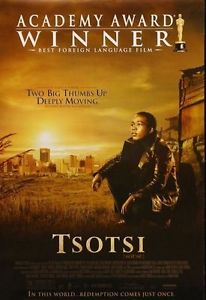 The film, Tsotsi, is an adaptation of an Athol Fugard novel of the same name. Set in a Johannesburg slum, it tells the story of a young street thug who highjacks a car only to discover a baby in the back seat. The character and film are a classic Power of Will story. It is Tsotsi’s connection with innocence that saves him, even as it triggers his downfall.
The film, Tsotsi, is an adaptation of an Athol Fugard novel of the same name. Set in a Johannesburg slum, it tells the story of a young street thug who highjacks a car only to discover a baby in the back seat. The character and film are a classic Power of Will story. It is Tsotsi’s connection with innocence that saves him, even as it triggers his downfall.
The film won the 2006 Academy Award for Best Foreign Language Film and was nominated for the Golden Globe for Best Foreign Language Film in 2006.
Here is how the production saga began. A British producer and good friend optioned the book. The biggest challenge was to update the story originally set in the 1950’s. A lot had changed in South Africa since the book’s publication.
The producer and I discussed adaptation issues over the weekend he stayed with us in Santa Monica. I watched A Reasonable Man, starring Gavin Hood. Gavin was then a little-known writer-director-actor from South Africa. In A Reasonable Man, he plays a Power of Conscience lawyer defending a black cowherd on a murder charge.
The producer and I agreed Gavin would be an interesting choice to direct Tsotsi. I gave a dinner party and Gavin was invited along with my producer friend and a possible production partner. Gavin knew the book and offered some insight into how he would approach writing/directing the adaptation. What a wonderful creative evening!
Along the way, I read script rewrites and looked at dozens of edit versions, including three possible endings. I enjoyed every minute and am so proud to be associated with this wonderful project. Below is a segment of A Reasonable Man and the pre-Oscar win trailer of Tsotsi.
I am hoping to discover more breakthrough South African talent while working with young filmmakers in Cape Town and Johannesburg this month.
A Reasonable Man
https://youtu.be/GOgt9j2ZY8o
Tsotsi Trailer
https://youtu.be/rjxLQPumRpc
]]>
 Since 1929 — the year of the very first Academy Award ceremony — only one woman has ever won the Academy Award for Best Director (Kathryn Bigelow The Hurt Locker). As of 2018, only five women have ever been nominated for the Academy Award for Best Director:
Since 1929 — the year of the very first Academy Award ceremony — only one woman has ever won the Academy Award for Best Director (Kathryn Bigelow The Hurt Locker). As of 2018, only five women have ever been nominated for the Academy Award for Best Director:
Lady Bird helmer Greta Gerwig became that fifth nominee this year. She joined Lina Wertmüller (Seven Beauties), Jane Campion (The Piano), Sofia Coppola (Lost in Translation) and barrier buster Kathryn Bigelow in the exclusive club.
Wonder Woman director Patty Jenkins didn’t make the cut even though she was widely regarded in the press as a contender. The film was a commercial and critical hit. It grossed $821 million worldwide and was predicted as a serious contender for a Best Picture nomination, having received one of 11 nominations for the Producers Guild of America’s Darryl F. Zanuck Award. No dice. That the film was listed as one of the American Film Institute’s Top Ten Films of 2017 didn’t make a difference.
Perhaps there’s only room at the table for one woman at a time. So here’s a modest proposal– Let’s split the award in two.
One award for Best Female Director and one award for Best Male Director. That would level the playing field. Arguments about “diluting the award” are irrelevant and really only apply to men (since women have been by-and-large excluded). Its Awards are divided in sports and in the Actor categories. If the difference is between women being excluded or recognized for their ability among their peers, I say split the category.

]]>
We all love animals. Our pets, creatures in nature documentaries, and even the critters in our gardens. But when you’re writing them into your movie- most likely an animation, because as the old mantra goes, “never work with children, water, or animals”- it’s important to remember to keep in mind that they aren’t just human. You can write a very different kind of character.
They can be any of the Nine Character Types- no matter the species, the Character Types always apply. But consider the fact that they are animals will affect how they interact with the world. What their physical capabilities are. How they demonstrate the traits of their Character Type.
Animal motivations and behavior adhere to one of the Nine Character Types, but as these examples demonstrate, the animal’s natural instincts present them with a variety of challenges.e.
Power of Love

Lady (Barbara Luddy), Lady and the Tramp
Power of Love characters are often mentors, caregivers or parents at their best. They are stalkers and needy codependents at their worst. They see their value in how others love them, and they believe that those they show affection to owe them love in return.
Lady and the Tramp is a classic romantic comedy, and Cocker Spaniel Lady falls for the charming, rough-around-the-edges Tramp (Larry Roberts). Lady is protective of both friends and family alike.
Dogs are incredibly affectionate pets. They are willing to protect those they love no matter the cost. Lady is no exception. She is one of the best examples of a Power of Love animal. Throughout the film, every action she takes is to preserve and to protect her loved ones. Lady demonstrates the positive side of Power of Love.
Power of Imagination
 Po (Jack Black), Kung Fu Panda
Po (Jack Black), Kung Fu Panda
Power of Imagination characters are those who are reluctantly called upon to embark on an epic quest or fulfill a destiny thrust upon them. Po is a classic example of an unwitting hero when he is unexpectedly declared the true “Dragon Warrior” of his realm by Master Shifu (Dustin Hoffman).
In contrast to the other Kung Fu warriors, Po is an overweight, food-obsessed Panda whose adoptive father runs a noodle shop. Nothing about him suggests he could be a savior or a warrior. But he brings his fellow Kung Fu masters together and embraces his destiny.
Po headlines a classic Power of Imagination tale, Kung Fu Panda. This is unlikely hero judged for his appearance and his species. He defies the “just a cuddly and peaceful Panda” cliche. Po gives his all as a Power of Imagination character, as he unites his fellow kung fu masters.
Power of Will
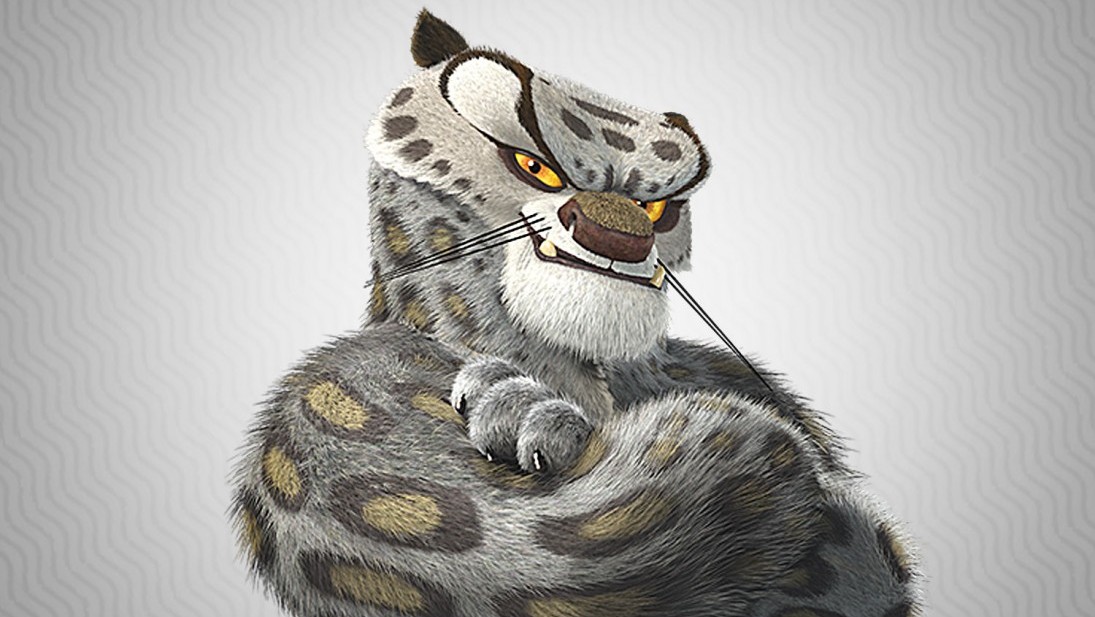 Tai Lung (Ian McShane), Kung Fu Panda
Tai Lung (Ian McShane), Kung Fu Panda
On the flipside of Po is Tai Lung, who was also a protege of Master Shifu. He turned to the Dark Side and his powers for evil. As a Power of Will Character, Tai Lung is interested in control and domination.
Power of Will characters desire is to subjugate and conquer. Tai Lung’s wants to become the Dragon Warrior, for his own selfish reasons.
Unlike Po, Tai Lung is a cat, a snow leopard. His feline tendencies lead to some humorous moments. Power of Will Characters conquer because they fear being vulnerable. We learn that Tai Lung felt abandoned, one of the reasons for his tyrannical tendencies.
Power of Will characters can either be one-dimensional or richly detailed. Tai Lung falls into the latter category. Tai Lung is the perfect foil for Power of Imagination, Po. He mistakes kindness and caring for weakness and assumes an overweight, bumbling Panda could be the Dragon Warrior and defeat him.
Power of Excitement
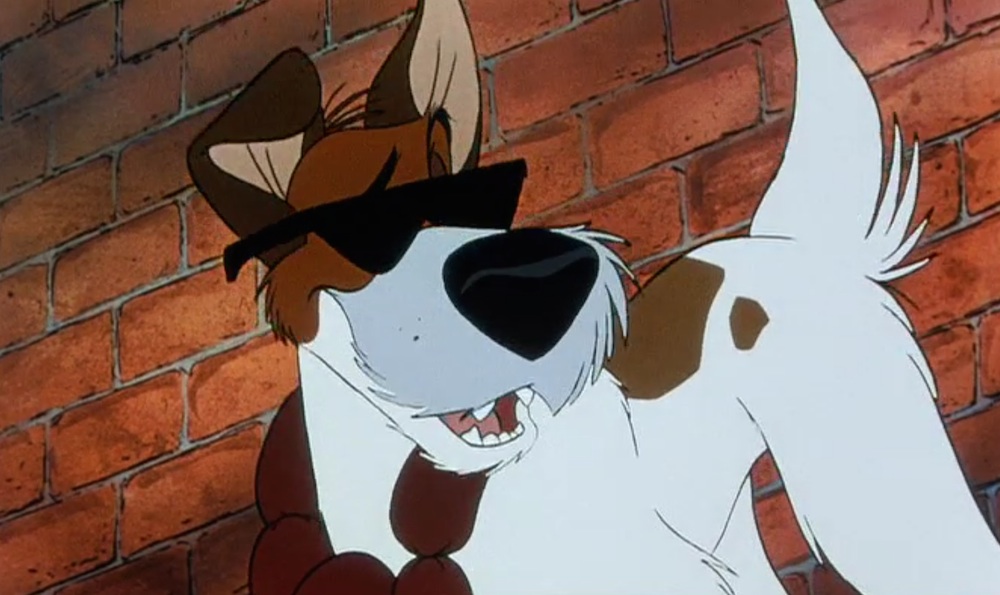 Dodger (Billy Joel), Oliver and Company
Dodger (Billy Joel), Oliver and Company
Power of Excitement Characters are charming thrillseekers who are the life of the party and never think of the consequences of their endless pursuit of pleasure.
In Disney’s animated adaptation of Oliver Twist, streetwise mutt Dodger takes displaced orphan kitten Oliver under his wing. Oliver learns bad habits under Dodger, a dog who shirks responsibility and lives only for his enjoyment. Life is a game to Dodger, and New York City is his playground.
Dodger’s opening musical number “Why Should I Worry? Why Should I Care?” defines his carefree character, and demonstrates the other side to dogs as pets. They are Power of Excitement characters because they live only for what gives them joy.
Power of Ambition
Nick (Jason Bateman), Zootopia/Zootropolis
Zootopia is, if you’ll pardon the pun, a very different beast to the other movies featured on this list. The film takes place in a world of animals, as opposed the human world which features animals interacting with humans.
Power of Ambition characters are eager to gain approval or impress others with a false front. They can never be themselves because they are constantly trying to be something else. These Characters can be Salesmen or Con Artists, like Sly Fox Nick.
Foxes are cunning animals that slink away from trouble, and Nick is very much of that mind. When he is caught up in a conspiracy that threatens the whole of Zootopia, he is still only interested in escaping police custody, making a quick buck, and going back to his old ways.
Power of Conscience
 Judy Hopps (Ginnifer Goodwin), Zootopia/Zootropolis
Judy Hopps (Ginnifer Goodwin), Zootopia/Zootropolis
Power of Conscience Characters believe that they know exactly what is right and what is wrong. They operate by their own moral compass and think others should live up to a similar high moral standard. These characters will do anything to expose injustice or corruption
Rabbit Judy Hopps is the driving force behind Zootopia. She uncovers the problem at the heart of the movie and sets most of the major events of the plot in gear. She has always had to fight for what she believes in. Everyone else in the police force underestimates her due to her size and her species.
Judy has no personal life because she is dedicated to upholding the law, even when everyone tells her she isn’t good enough to do so. She is undoubtedly a force for good in the film, but skewers on the more neurotic side of the spectrum. She is uptight, critical, and immediately bristles at her unwilling partner, Nick.
Power of Idealism
 Remy (Patton Oswalt), Ratatouille
Remy (Patton Oswalt), Ratatouille
Power of Idealism characters are never satisfied. They are forever reaching for perfection, even though they can never achieve it. They want to indulge in life’s luxuries because everything else is below them. They see life as one big drama, full of highs and lows, with nothing in between.
Remy is introduced to the audience as a character unhappy with his lot, who wants to reach far beyond his station. He is fed up with living and eating like the rest of his rodent brethren.
Living in Paris, Remy wants to be a gourmet chef in the culinary capital of the world. His species is a terrible setback. If he were any other animal, it might just be feasible to be a chef. The stigma of being an “dirty rat” propels him onward to achieve his dream.
Remy finds a vessel for his craft in bumbling human kitchen boy Linguine (Lou Romano). Remy manipulates the boy to set the restaurants of Paris alight with talent and creativity. Ratatouille is a great animal Power of Idealism story.
Power of Reason
 Rabbit (various), Winnie the Pooh
Rabbit (various), Winnie the Pooh
Power of Reason characters value logic above all else. The world is a series of puzzles that must be solved, and everything must have a rational answer. Any deviation from order and fact will result in chaos.
The fun-loving inhabitants of the Hundred-Acre Wood, Winnie the Pooh, Tigger, and Piglet, upend Rabbit’s need for peace and sanity with their anarchy and disorder. Their antics are a burden on Rabbit’s life. In his ideal world, he would be left alone to farm his carrots and live the quiet life. His neighbor’s problems and turmoil will never allow this.
Rabbit is similar to his real-life animal counterparts. He is twitchy and forever on guard. Rather than this being a survival instinct, it is because he is forever aware that his friends will disrupt his peace and orderly approach to life.
Power of Truth
 Gill (Willem Dafoe), Finding Nemo
Gill (Willem Dafoe), Finding Nemo
Power of Truth characters are paranoid, forever on the lookout for enemies and traps that might betray them. They are distrustful and uneasy about everything. They occupy themselves with trying to uncover slights and solve mysteries. These characters are often Detectives or Neurotics.
Gill is a fish who has been through a lot- his scars tell a story about why he distrusts humans and believes that there is a conspiracy surrounding the fish tank he is stuck in. He is acutely aware his life is under threat by the dentist who imprisoned him.
It’s amusing to see such a bitter, jaded character in a children’s film. Perfectly by Willem Dafoe, Gill seems more like a grizzled Private Eye or conspiracy theorist than an Angelfish in a Fish Tank. Gill’s paranoia is justified. He knows every inch of the tank in which he is trapped, and uses it to his advantage to escape.
For more examples of all the character types, you can purchase my in-depth e-books at the ETB shop, or you can read more articles on all the “Power Of…” types including James Bond, Doctor Who, Batman and Sherlock Holmes, every Tuesday. There are also 9 pinterest boards full of character examples online. Check them out and let us know at [email protected] if you have any other suggestions.
]]>
Each Character Type has unique flaws that can drag them down, and can be overcome to create a satisfying story – Protagonist has a problem, their traits make things more difficult, they overcome those character traits to resolve their conflict, etc.
But what if your character tries to redeem themselves and fails so many times in ways that are harmful to others, that they can never truly be redeemed? To examine this, we’ll be looking at the Netflix adult animation Bojack Horseman. Be advised that MAJOR SPOILERS follow for all four seasons of the show.
Bojack Horseman (voiced by Will Arnett) is Power of Ambition, but the front that he puts on is so typically Power of Excitement that it is initially hard to determine which type he is. His party-loving ways seem like Power of Excitement behaviour, but deep down all his wants is to be liked, and to be successful again.
Bojack is a washed-up actor famed for his role on a network family sitcom back in the 90’s. Now he just drinks and makes the lives of those around him- agent Princess Carolyn (Amy Sedaris), rival Mister Peanutbutter (Paul F. Tompkins), roommate Todd (Aaron Paul) and biographer Diane Nguyen (Alison Brie)- a living hell. Bojack is aware of his deep insecurities and reckless behaviour and manages to ruin the constant shots at redemption that come his way.
Many characters that seem irredeemable never actually try to fix themselves. But Bojack has attempted on multiple occasions to get his life back on track, even abandon Hollywood and live a quiet life, but every time he tries this it ends in disaster and he returns to his miserable bachelor pad near the Hollywood sign.

Most notably he tries to seduce the underage daughter on a woman he once loved, and in a later season, he upsets a man who fixes up Bojack’s decrepit country house while mourning the death of his wife. Even his shots at rehabilitation and growth end in disaster. At some point, an audience must realise that no matter what, a character will never truly change.
Bojack discovers he has a sister, a young woman in his life that he has neglected up until that revelation. It seems like he has found someone to care for, and who may be a positive influence on him, but the viewer is left knowing that inevitably Bojack will destroy the relationship in some unforgivable way.
There are only so many times he can get himself clean of drugs and alcohol, and claim to be thinking of anyone but himself. He is a self-loathing narcissist who may experience profound revelations but never acts on them, and likely never will.
I cannot think of another show willing to show a character is such a self-destructive cycle, especially because the rug is always pulled from underneath our feet. Bojack may never change, but even though he tries- and effort should be commended- he is arguably worse than those that never try.
They may have a shot at redemption, but unwillingness holds them back. Bojack is willing to try, but he is his own worst enemy, and perhaps is truly irredeemable. I’d like to see more writers taking such a risk with their characters, especially ones as amusing as Bojack Horseman.
]]>
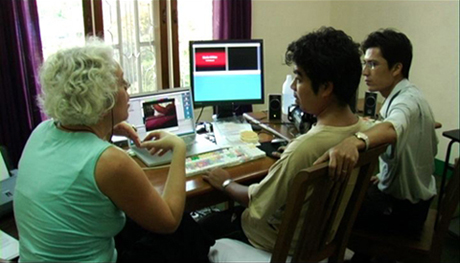 You may think, as a writer or just someone who enjoys watching Documentaries on TV and at the Cinema, that because they are non-fiction that no effort is required to create characters. This couldn’t be further from the truth – Documentaries don’t work, even though there is automatically a story to be told unless the Director and Editor can craft compelling characters out of the story presented to them, and the footage they shoot.
You may think, as a writer or just someone who enjoys watching Documentaries on TV and at the Cinema, that because they are non-fiction that no effort is required to create characters. This couldn’t be further from the truth – Documentaries don’t work, even though there is automatically a story to be told unless the Director and Editor can craft compelling characters out of the story presented to them, and the footage they shoot.
How to find the Character
Once a Documentary has finished shooting, there are hours and hours of footage to go through. This is where the character is created, as opposed to on a page before the cameras even start rolling. There is an element of creating the character during filming when a director decides what angles to shoot their subject at, or when to film them during their day-to-day activities or in an interview. But it all comes down to the edit suite.
The key is to pick the moments in the life and clips that reinforce what you think is most true about the character; you have to decide what the essence of the subject is and find the moments that will strengthen that and don’t confuse things. Real lives are messy and inconsistent, but they can’t afford to be shown in the same way in a Documentary, or you immediately betray your character, and your audience will remain unengaged.
Tying Character to Subject matter
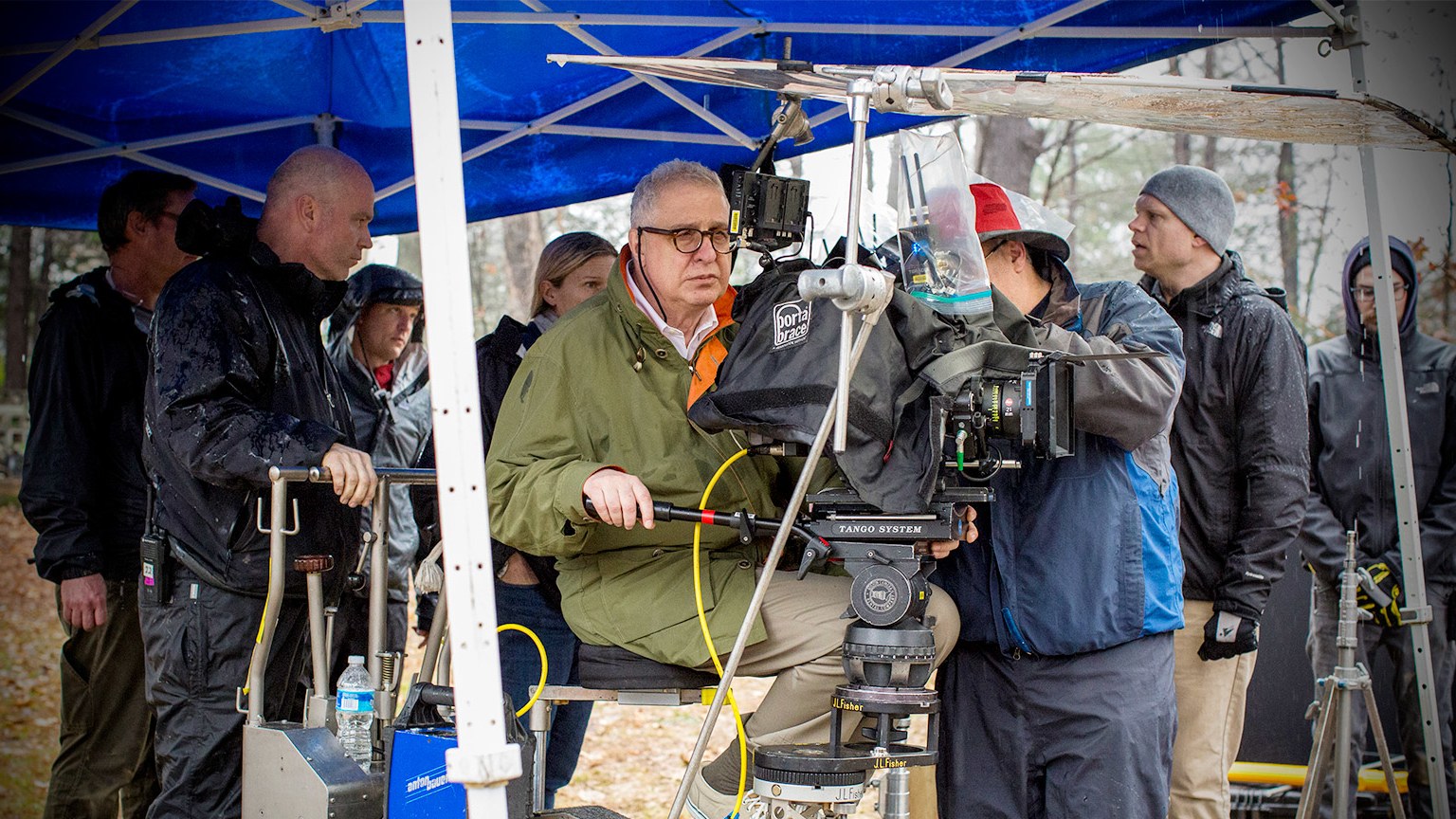 Just because you edit the footage of your real-life subject doesn’t mean they can’t be surprising or complicated, but you want their presentation onscreen to be consistent, in the same way that a screenplay needs to be structured. If they are not “written” in the edit, you are just presenting improvisation, which very few filmmakers can pull off effectively.
Just because you edit the footage of your real-life subject doesn’t mean they can’t be surprising or complicated, but you want their presentation onscreen to be consistent, in the same way that a screenplay needs to be structured. If they are not “written” in the edit, you are just presenting improvisation, which very few filmmakers can pull off effectively.
Make sure the actions and dialog of the characters you include in the documentary relate directly to the theme or subject of your documentary. What we see of your character should demonstrate the worldview that they have. When your selected footage shows the audience how your character sees the world, then you’ve got a character as good as any that you could create yourself.
If your documentary is trying to make a point, you need to ensure your subjects either make that point for you, or at least are edited to reinforce your point- for example, if there is some injustice your documentary is trying to combat, make sure we see the effect the injustice has on your characters. If you’re trying to tell a story about one particular figure, make sure you present to the audience exactly why this figure is interesting enough to dedicate an entire documentary to. No matter how good your documentary, it will be nowhere near as good if you don’t tie your subject directly to the subject matter.
Examples
Here are a few great examples of Documentaries that craft characters effectively. I’ll try not to go into too much detail, so I don’t spoil them for you! All are well worth watching as exercises in how to craft characters in non-fiction stories.
The Imposter
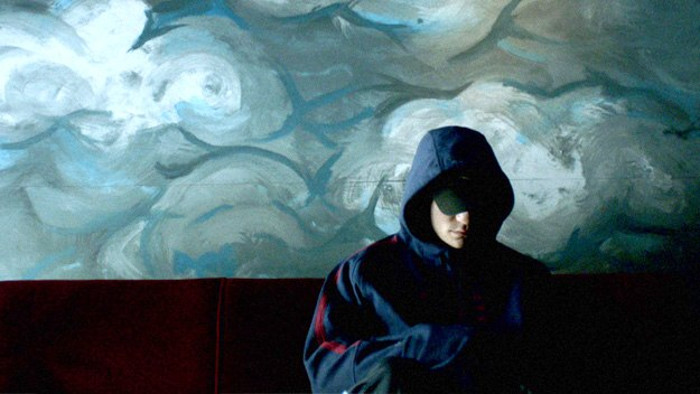 The Imposter works so brilliantly because its central subject, Frédéric Bourdin- a great example of a Power of Ambition figure, incidentally- is so unreliable yet persuasive. Your opinion of him continually switches as the story unfolds. This is down to a central creative choice, explained in more detail by Tony Zhou’s video essay below, of having Frédéric address the camera directly. No other subject in the film is interviewed in this way.
The Imposter works so brilliantly because its central subject, Frédéric Bourdin- a great example of a Power of Ambition figure, incidentally- is so unreliable yet persuasive. Your opinion of him continually switches as the story unfolds. This is down to a central creative choice, explained in more detail by Tony Zhou’s video essay below, of having Frédéric address the camera directly. No other subject in the film is interviewed in this way.
The documentary is all about questioning what is real or not, and the documentary is shaped around Frédéric’s testimony. Every second he is on screen, it feels like his performing. We never see him act naturally, as though he is a flawed individual. He is shown to be always putting on a front, and the mystery of what is behind that is what grips the audience throughout.
Tickled
 New Zealand documentary Tickled explores the unbelievable story of a dark conspiracy behind competitive tickling videos. To say any more would be to ruin the whole film. But the key figure behind it all, who is hardly seen, has a presence felt throughout the film.
New Zealand documentary Tickled explores the unbelievable story of a dark conspiracy behind competitive tickling videos. To say any more would be to ruin the whole film. But the key figure behind it all, who is hardly seen, has a presence felt throughout the film.
Every single figure in the documentary, apart from director and presenter David Farrier, is only shown in relation to the central figure at the top of the conspiracy. Not only does it make their eventual appearance all the more impactful, but effectively demonstrates the reach that they have, and the lives that have been ruined by interacting with them- very much a Power of Will character.
By the end of the documentary, the only character we are genuinely interested in is the person behind the tickling conspiracy that spans decades and continents. This was a deliberate creative decision because they are by far the most engaging subject in the documentary. Nobody else is defined outside of their relation to the mysterious central subject, so all our attention is kept on that central subject.
Catfish
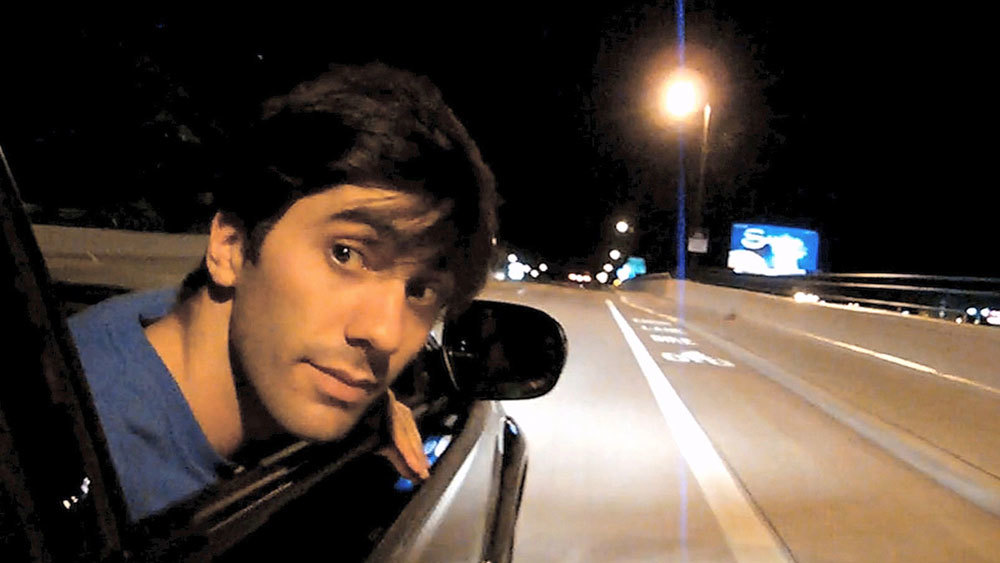 To say much more than Catfish is a Power of Love story would be to give the whole thing away. But the theme of the documentary is that of combating loneliness. Despite the initial appearance of being a mystery, at its core Catfish is a love story. Director and subject Nev Schulman has an online relationship with a girl calling herself Megan, but all is not as it appears. Nev and Megan’s actions throughout the film- as their relationship is the central focus of the film- are driven by a need to be loved.
To say much more than Catfish is a Power of Love story would be to give the whole thing away. But the theme of the documentary is that of combating loneliness. Despite the initial appearance of being a mystery, at its core Catfish is a love story. Director and subject Nev Schulman has an online relationship with a girl calling herself Megan, but all is not as it appears. Nev and Megan’s actions throughout the film- as their relationship is the central focus of the film- are driven by a need to be loved.
Megan is mainly offscreen as Nev takes the viewer on a journey, so we begin by experiencing his lust, curiosity, disappointment, and excitement (not necessarily in that order) and finish by learning about Megan’s needs and wants. The documentary only shows us Nev in relation to what he wants and needs from Megan, so all we are focused on is who he is as Megan’s lover, not as a three-dimensional person.
Both subjects are trying to find love and to be loved by another, and the documentary is successful at showing those desires by focusing exclusively on the lengths both characters go to be with one another.
Tickling Giants
 Bassem Youssef, the Egyptian equivalent of fellow Power of Truth figure Jon Stewart, is the subject of this documentary. Youssef creates a satire show that lampoons Egyptian politicians, and the film tracks the show’s rise, fall and Bassem’s exile from the country that fell in love with his desire to call out injustice and incompetence.
Bassem Youssef, the Egyptian equivalent of fellow Power of Truth figure Jon Stewart, is the subject of this documentary. Youssef creates a satire show that lampoons Egyptian politicians, and the film tracks the show’s rise, fall and Bassem’s exile from the country that fell in love with his desire to call out injustice and incompetence.
Youssef is shown to be reckless in pursuit of satire, standing up to his country’s leaders no matter the cost to those he loves. Even when he is with his parents, wife, children, and friends, anything he says or does is concerning his show. He cares for his staff, who also feature, but all of them are presented in the same way as Bassem – calling out those in power for what they do to the people of Egypt.
By focusing on Bassem’s show, as opposed to just Bassem, Tickling Giants successfully shows the viewer what satire means to the subjects of the documentary, and what it stands for in a country like Egypt. The show that the subjects have created is bigger than any single one of them, which is a point Bassem constantly raises both through his narration and to everyone he interacts with in the film.
Exit Through The Gift Shop
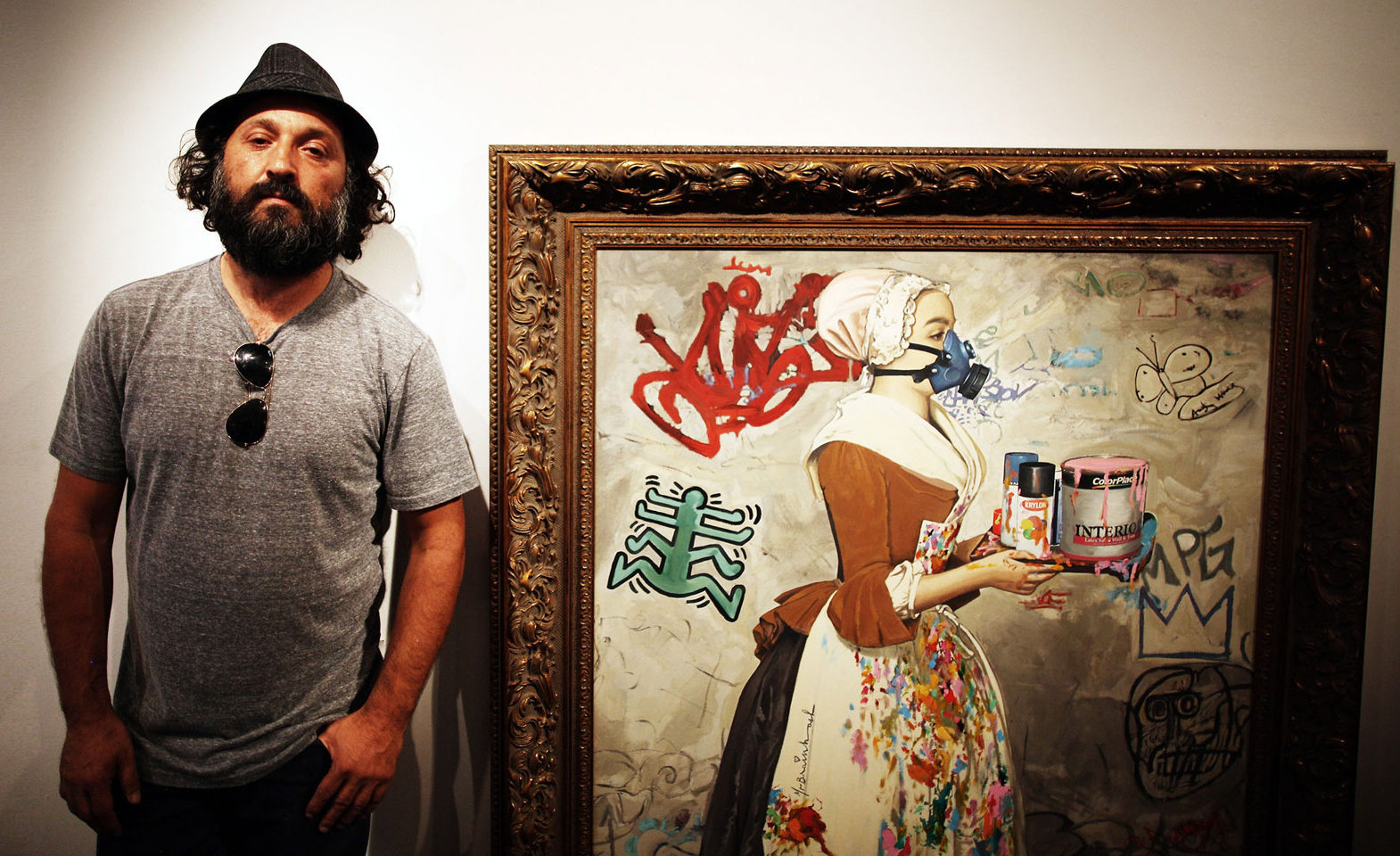 This documentary smartly diverts attention from its director- the artist Banksy, who chooses to remain anonymous- by distracting the viewer with another artist called Mister Brainwash. Mister Brainwash completely misses the point of Banksy’s art when he tries to imitate him, which is where the humour of the film comes from.
This documentary smartly diverts attention from its director- the artist Banksy, who chooses to remain anonymous- by distracting the viewer with another artist called Mister Brainwash. Mister Brainwash completely misses the point of Banksy’s art when he tries to imitate him, which is where the humour of the film comes from.
Mister Brainwash is such a larger-than-life, Power of Excitement character that the viewer forgets that the documentary is meant to be about Banksy- a shrewd move by a man who wants to be left alone so people will just focus on his art and not the artist behind them.
Exit Through The Gift Shop is ultimately about whether there is any point to art, and whether something with no thought behind it can be called art. Mister Brainwash hilariously proves Banksy’s thesis right. By focusing entirely on a subject who distracts from the intended subject of the documentary, the viewer becomes more interested in the themes of the film and less on the figure who is directing.
Banksy is the documentary’s starting point, but he wisely takes control of the film’s narrative, so Mister Brainwash becomes our guide to the stupidity behind much of modern art. He is a character who is all style and no substance, so it is left to the viewer to decide whether he can be called an artist in the same way as Banksy is perceived to be an artist. This documentary is the ultimate act of self-deprecation.
Call Me Lucky
 Call Me Lucky only works because of the journey that its subject, Barry Crimmins, goes through. If it had focused exclusively on Barry’s life as a stand-up comedian, it just wouldn’t work that well. Barry rages against the system, but it is what happens to him after he leaves the world of comedy behind that reinforces his viewpoint.
Call Me Lucky only works because of the journey that its subject, Barry Crimmins, goes through. If it had focused exclusively on Barry’s life as a stand-up comedian, it just wouldn’t work that well. Barry rages against the system, but it is what happens to him after he leaves the world of comedy behind that reinforces his viewpoint.
He is portrayed as a survivor and a victim, and this is the motivation that drives his moral crusade and successful activism (as to what he is crusading against, you’ll have to watch the documentary to find out- no spoilers here!)
Barry Crimmins is a Power of Conscience character, who operates by his own rules. This leads him to self-destructive behaviour early on, but once he finds a purpose to direct his unique moral code and brand of justice towards, he begins to heal as a person. The film always shows Barry in relation to his activism- whether being interviewed, portrayed in archive footage or talked about by other people, he only has justice on his mind. This documentary is about justice, and has a thoroughly likeable central subject to keep the audience engaged with the justice that needs to prevail.
Video Essay
This excellent video essay describes why The Imposter is so effective in its crafting of a character. Fair warning, it spoils the entire film, so go and watch it first!
]]>

